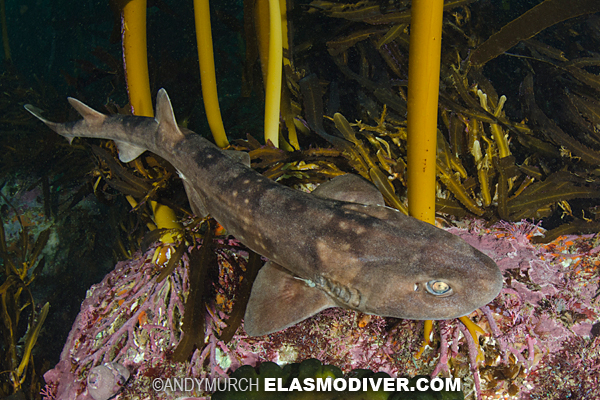When I first started with SASC, I was presented with the opportunity to work on an independent research project. At first, the idea of having my own research project was intimidating. I had very little experience creating study designs outside of a Field Sampling class through Oregon State University. With reassurance that I would not be alone in my struggles Lauren, a fellow intern, and I created a research project that compares the effects of capture and handling stress induced by different capture methods on Dark shysharks (Haploblepharus pictus).

Anthropogenic stress from capture and release (C&R) may cause a decreased survival rate of individuals. It’s important to understand the physiological responses of elasmobranchs captured during hand lining and snorkeling to utilize the most sustainable methods in research and gauge our contribution to post release mortality. As Catsharks have not been heavily studied, Lauren and I, supported by SASC, are able to contribute to further knowledge of the endemic species.
There has not been a vast amount of research done on the capture stress of elasmobranchs as most C&R studies have focused on teleost. A study by Gallagher et al. (2014) on the C&R stress responses of hammerheads, bull, blacktip, lemon, and tiger sharks, found that some species are more vulnerable to capture stress and mortality. In addition, Marshall et al. (2012) found species-specific differences in blood parameters post stress. They also deduced that high accumulations of lactate may lead to irreversible physiological disruptions that can negatively impact survivability. However, we have not found any studies focused on the smaller endemic Catshark species of South Africa.
There is a lack of understanding of the physiological C&R response of Catsharks followed by a lack in understanding of how physiological data should be interpreted to the population level to inform management decisions. Addressing this research allows us to inform managers and stakeholders to better understand the true effects of C&R on Catshark physiology while filling in data gaps. By doing so we will be able to describe the connection between metabolic stress responses and post release survival.

Aim
To compare secondary stress response parameters among different capture and handling techniques to minimize post release stress effects and mortality rates
Objectives
- Capture individuals via Snorkeling and hand-lining
- Quantify capture stress
- Test for metabolites
- Establish a baseline for metabolites

Through SASC I have expanded my understanding of the integral factors that make a sound scientific study. Creating a viable design with several contingency plans has provided me with a taste of what real science looks like. I now have faith in my abilities to formulate a research project and exclude confounding factors.
We also had to present our study design in the form of a research proposal to the staff and interns at SASC, allowing us to receive and digest constructive criticism. These tasks are setting me up for greater professional success and have grown my personal communication skills.
I have about three weeks left with SASC and look forward to hopefully collecting enough data samples for statistical analysis.

Typically speaking, how much data is needed in order to analyze and derive a sound statistical outcome? Will the research continue, once your time at SASC ends? Thank you, Nomi, for the information. While it makes sense, I would have not thought about the long term impacts to marine life of any sort.